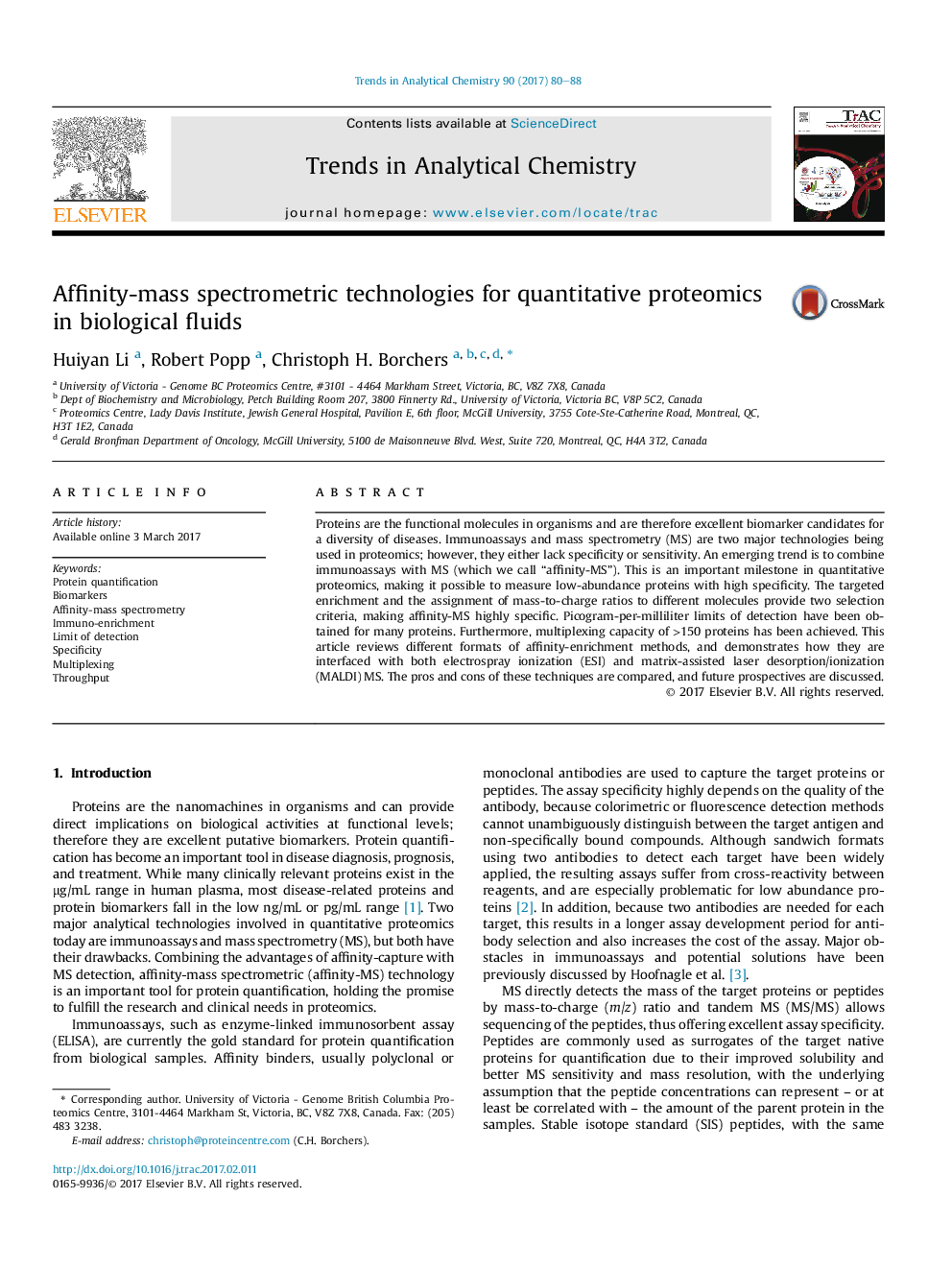| Article ID | Journal | Published Year | Pages | File Type |
|---|---|---|---|---|
| 5141619 | TrAC Trends in Analytical Chemistry | 2017 | 9 Pages |
Abstract
Proteins are the functional molecules in organisms and are therefore excellent biomarker candidates for a diversity of diseases. Immunoassays and mass spectrometry (MS) are two major technologies being used in proteomics; however, they either lack specificity or sensitivity. An emerging trend is to combine immunoassays with MS (which we call “affinity-MS”). This is an important milestone in quantitative proteomics, making it possible to measure low-abundance proteins with high specificity. The targeted enrichment and the assignment of mass-to-charge ratios to different molecules provide two selection criteria, making affinity-MS highly specific. Picogram-per-milliliter limits of detection have been obtained for many proteins. Furthermore, multiplexing capacity of >150 proteins has been achieved. This article reviews different formats of affinity-enrichment methods, and demonstrates how they are interfaced with both electrospray ionization (ESI) and matrix-assisted laser desorption/ionization (MALDI) MS. The pros and cons of these techniques are compared, and future prospectives are discussed.
Related Topics
Physical Sciences and Engineering
Chemistry
Analytical Chemistry
Authors
Huiyan Li, Robert Popp, Christoph H. Borchers,
